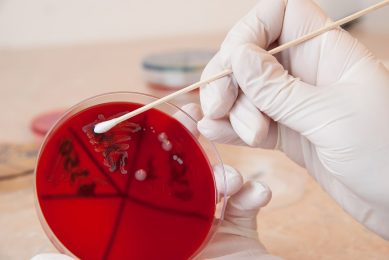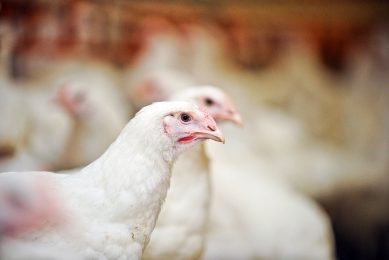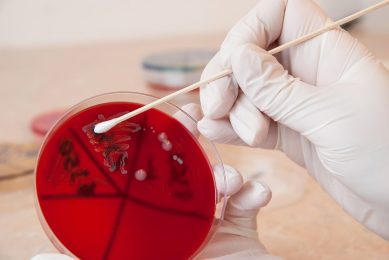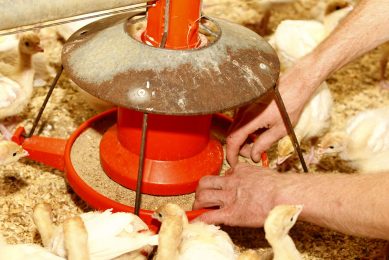An ounce of prevention is worth a pound of cure
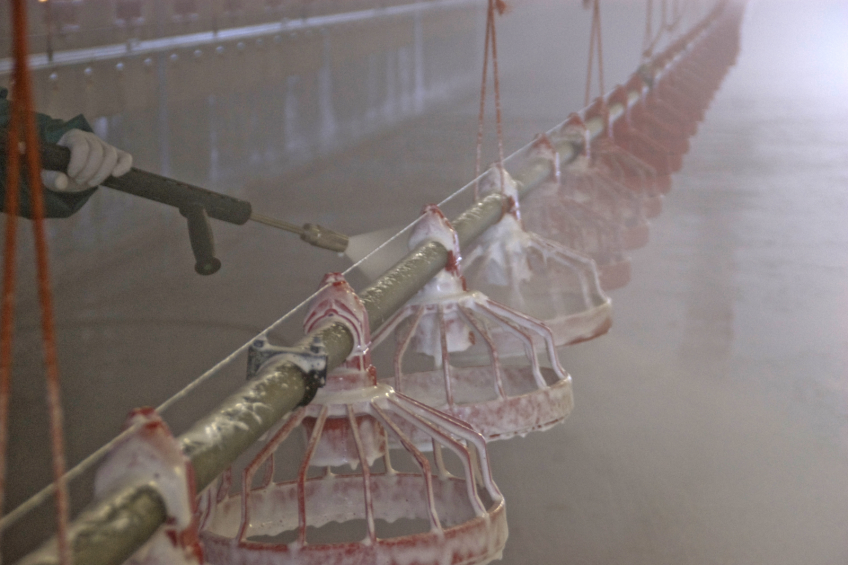
Today’s modern poultry production has a lot to gain from cleaning and disinfection. On the one hand, the sector’s toolbox is emptying with increasingly less antibiotics being used, but on the other, well-performing genetics have been selected for performance, not for resistance against disease. Preventing the bugs from spreading, that is the day to day challenge.
There are different vectors for possible poultry disease transmission besides unhealthy chicks arriving at the farm. These vectors can be subdivided into several categories. The first is mobile biological, which comes down to the bird itself, people, rodents – which are able to transmit pasteurellosis, salmonellosis, etc, insects – that can carry avian viruela, Marek’s disease, infectious bursal disease (IBD), salmonella, E. coli, and campylobacter, and wild birds potentially carrying avian influenza, pasteurella and salmonella. Mechanical mobile factors such as vehicles, are vectors for IBD and Salmonellae.
The second category worth mentioning are the nutritional vectors. Poultry feed can possibly contain Salmonellae, paramyxovirus and IBD. Water is the forgotten nutrient which can carry enterobacteria like salmonella and E. coli. Last but not least are the static vectors. Litter, fluff and surfaces such as floors, walls, and roofs are all able to transmit IBD and salmonella amongst others. On the macro-biological side, rodent control and excluding wild bird contact are the main challenges. Meso-biologically, good working insecticides are paramount. Here, we will focus only on the micro-biological challenges and how to prevent them through good hygiene.
Cleaning and disinfection
Hygiene consists of two parts, cleaning and disinfection. Disinfection without prior cleaning is a waste of money. Cleaning is removing the dirt that can be seen partially: to separate and remove this dirt from a surface, through water and a detergent. In other words to make the surface as free as possible from organic soil and the microbes inside it, that would impede the disinfectant to reach the surfaces. Four factors will determine the functioning of a detergent:
- Chemical energy: pH and concentration. Alkaline detergents remove proteins and fat; acid detergents remove mineral deposits like scale,
- Thermal energy: Fat starts to dissolve as from 35°C or 95°F,
- Physical energy: A high pressure washer for example,
- Contact time: This will enable the chemical energy to do its job. Moreover, it is also the only factor that doesn’t cost any energy.
Therefore, foam is often used instead of a classical detergent, since it adheres longer. Today, a new generation of foaming cleaners have been developed, that cling longer on the surface and penetrate much deeper into the dirt. Gels are also available and these adhere even longer and hence no warm water is required. Increasing the contact time will allow savings on water consumption, labour and energy, as shown in Figure 1, also referred to as the sinner circle. A good cleaning job should allow for a >85% reduction of micro-organisms, generally known as a sanitised situation. This will allow the disinfectant to reduce the rest of the pathogens easier.
Figure 1 – The sinner circle

The goal of disinfection is to reduce the number of pathogens, ideally with log 4 (99.99%). Therefore, the disinfectant should be compatible with the detergent, foam or gel cleaner. This means that if the cleaning agent that is used contains cationic surfactants, the disinfectant should not contain anionic surfactants or vice versa.
Disinfectant characteristics
Well formulated, 21st century disinfectants should comply with a number of characteristics. In terms of composition the things to be considered are how many different active ingredients compose the formulated product so that it assures a maximum synergy? Does the product contain buffering agents, stabilising agents, wetting agents, sequestering agents? Does it work in contact with organic matter, in all temperatures and pH values and in hard water? Is there a guaranteed shelf life for both the concentrate and the dilution? The million dollar question is how many grams/litre (or %) active ingredients are there in the product? This concentration will determine the dilution. If the supplier is ISO and/or GMP certified, you can be sure that the label is trustworthy.
Opportunities should also be examined. Does the product cover the full spectrum of bactericide, fungicide, virucide and sporicide? (Be aware of ‘statics’, like bacteriostatics: they stop their development, but don’t reduce their number). Also, no classical disinfectant formulations will kill oocysts. If the goal is to kill coccidiosis as well, by contact disinfection, make sure there is data available that proves the coccicidal activity of the disinfectant, preferably in the spore stage. Can the product be sprayed, foamed and fogged as it is? Without having to add a foaming agent or a carrying agent. Ideally, a disinfectant should be mixed with water only, to dilute.
Safety also has to be considered. For people (it should be non-carcinogenic like formaldehyde, for example, complying with the universal CLP and the European REACH regulations for biocides), for the animals, for the equipment (non-corrosive on galvanised feeder lines and fans, or aluminium drinker supports, etc) and for the environment, being biodegradable and therefore not containing heavy metals such as tin, silver nor being petroleum based such as HBTA phenolics that have been banned in Europe. It is a legal obligation to keep a safety data sheet (SDS) on file of every chemical stored. Pay special attention to personal protection equipment (PPE).
Also to be considered is whether a disinfectant is tested. Are there any test reports available? What is the testing protocol? Is it the European EN or the American AOAC which works with a higher organic challenge, simulating field circumstances?
These four criteria, composition, opportunities, safety and tested form the acronym COST. The real cost of a disinfectant however, is not its price per litre, but its cost in use, in dilution. A dilution of 0.5% = 1:200 = 5 ml/litre. It’s the cost of these 5 ml that is poured into 1 L water that counts. The more concentrated and synergistic the disinfectant, the lower the dilution and the less transport and storage costs involved.
Water line cleaning and drinking water treatment
Considering that a broiler drinks 2-4 times more than it eats, not only is the cleaning and disinfection of surfaces important, but also the waterlines should be cleaned internally and the water needs to be treated if it is not considered fit for human consumption. Cleaning involves removing the scale and the biofilm. The biofilm is a polysaccharide layer, caused by adding vitamins, medication, etc. through the water. It harbours mainly enterobacteria (Salmonella, E. coli, etc) and impedes the good functioning of medicine, vaccines, etc. It will, just like scale, block the nipples and reduce the water flow. Removing the biofilm is possible by oxidation. Stabilised hydrogen peroxide (H2O2) will do the job. In combination with organic acids (peracetic acid), it will also remove scale in just one shot (oxidation and acidification combined). If the product does not contain heavy metals, such as silver nitrate, it will leave no residues, being completely biodegradable. The water itself can be treated with cocktails of organic acids enriched with oligo-elements, essential oils, etc which fall under European GMP+ regulations, for optimising gut condition, health and digestion or FCR.
Biosecurity and prevention are a state of mind. Management should believe in hygiene and apply the principles just as the operators. For instance; a foot dip is there for every person passing through, including the general manager. Sanitation products and procedures are widely available, but people have to apply them correctly. Therefore operational biosecurity is probably the greatest managerial challenge to prevent diseases and save the incurment of costs in having to cure them.
References available upon request




